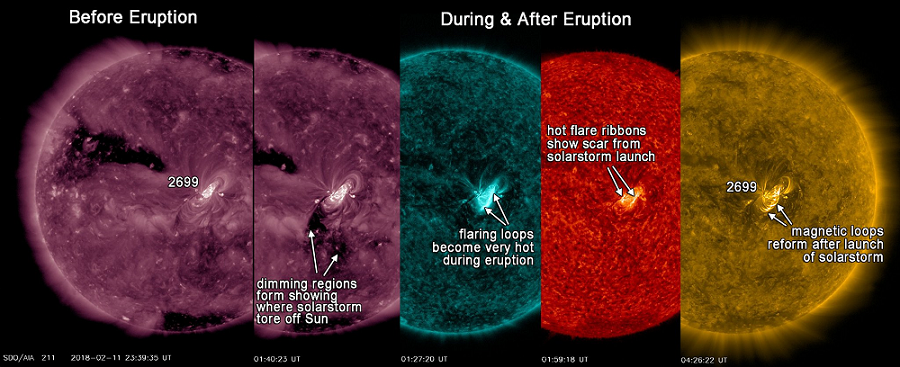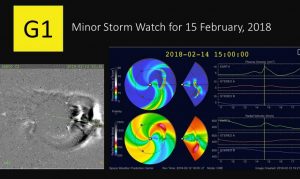
A potent solar storm is expected to impact Earth late tomorrow into Thursday, creating possible communication and electrical problems while delighting those in northern latitudes with the Northern Lights. The National Weather Service’s Space Weather Prediction Center (SPWC) has issued a A G1 Geomagnetic Storm Watch is in effect for Thursday. The G1 Watch has been issued due to the likely response associated with the arrival of an asymmetric halo coronal mass ejection (CME) glancing blow late tomorrow night to early on Thursday. The CME was first observed in SOHO/LASCO-C2 imagery on Sunday evening. As additional analysis and forecasting is complete, the watch could be upgraded.

These huge explosions of plasma originate from highly twisted magnetic field structures on the Sun. When these explosions occur from active sunspot regions on the Sun, it is not uncommon to see them associated with large solar flares. Some fast CMEs can reach the Earth in little as 14 hours, while others may take several days. According to the SWPC, “the first sign of a CME hitting the Earth environment is the plasma density jump due to the shock wave’s passage.” Forecasters use what is known as a coronagraph, which blocks the extremely bright disk of the Sun, so they are able to determine the CME’s size, speed, direction and density.
Just like at the surface of the Earth, the Sun is the primary cause of space weather. At times, the Sun can be thought of as going through a “stormy” period where its surface is more active than normal. When this happens, the Sun can send streams of energized particles out in all directions. When these energized particles interact with the outer reaches of our atmosphere, the aurora borealis (the Northern Lights) and the aurora australis (the Southern Lights) can result.
With this solar storm event, the Northern Lights could be strong at northern latitudes and may appear further south than usual. One of the better ways to track aurora activity is through the free Aurorasaurus app. Aurorasaurus allows users to share aurora sightings and pictures while also alerting others to the presence of aurora.